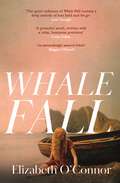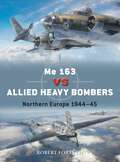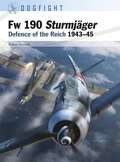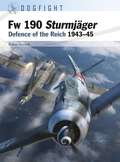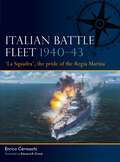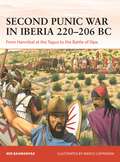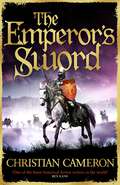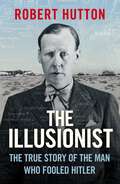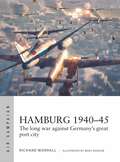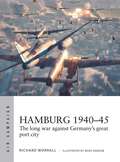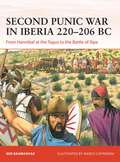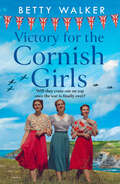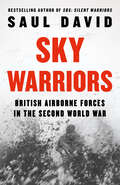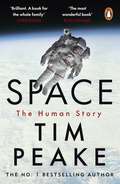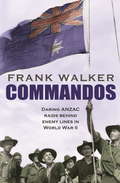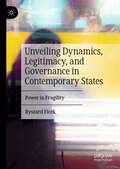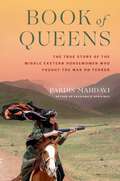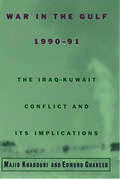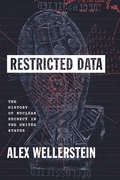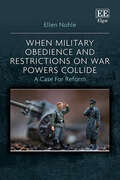- Table View
- List View
Marking Time (Cazalet Chronicles #2)
by Elizabeth Jane HowardBeautifully and poignantly told, Marking Time is the second novel in Elizabeth Jane Howard’s bestselling family saga The Cazalet Chronicles, set during the onset of World War II.'What magic transforms a book into a compelling, moving, unputdownable read? . . . Maybe my favourite books ever' - Marian Keyes, bestselling author of My Favourite MistakeHome Place, Sussex, 1939. As the shadows of the Second World War roll in, banishing the sun-drenched days of childish games and trips to the coast, a new generation of Cazalets takes up the family’s story.Louise, who dreams of becoming a great actress, finds herself facing the harsh reality that her parents have their own lives with secrets, passions and yearnings. Clary, an aspiring writer, learns that her beloved father, Rupert, is now missing somewhere on the shores of France. And sensitive, imaginative Polly feels stuck, haunted by her nightmares about the war.‘She helps us to do the necessary thing – open our eyes and our hearts’ – Hilary Mantel, bestselling author of The Mirror and the LightMarking Time is the second volume of the extraordinary Cazalet Chronicles and a perfect addition to your collection. Marking Time is followed by Confusion, the third book in the series.
Confusion (Cazalet Chronicles #3)
by Elizabeth Jane HowardSet in the height of the Second World War, The Cazalet Chronicles continues with the third in the series, Confusion, where chaos has become a way of life for the Cazalet family.'What magic transforms a book into a compelling, moving, unputdownable read? . . . Maybe my favourite books ever' - Marian Keyes, bestselling author of My Favourite MistakeIt’s 1942 and the dark days of war seem never-ending. Scattered across the still-peaceful Sussex countryside and air-raid-threatened London, the divided Cazalets begin to find the battle for survival echoing the confusion in their own lives.Headstrong, independent Louise surprises the whole family when she abandons her dreams of being an actress and instead makes a society marriage. Polly, now living in London with Clary, is struggling to come to terms with the death of her mother and manage her grieving father. Meanwhile, Clary is painfully aware that what she lacks in beauty she makes up for in intelligence, and is the only member of the family who believes that her father might not be dead . . .'She helps us to do the necessary thing – open our eyes and our hearts' – Hilary Mantel, bestselling author of The Mirror and the LightConfusion is the heartbreaking and heartwarming third instalment of Elizabeth Jane Howard's bestselling series. It is followed by the fourth book, Casting Off.
Whale Fall: One of the Observer's Top Ten Debuts of 2024
by Elizabeth O'Connor'I didn't want it to end' - Maggie O'Farrell'Powerful . . . written with a calm, luminous precision' - Colm TóibínAn Observer Best Debut of the Year 2024It is 1938 and for Manod, a young woman living on a remote island off the coast of Wales, the world looks ready to end just as she is trying to imagine a future for herself. The ominous appearance of a beached whale on the island's shore, and rumours of submarines circling beneath the waves, have villagers steeling themselves for what’s to come. Empty houses remind them of the men taken by the Great War, and of the difficulty of building a life in the island's harsh, salt-stung landscape.When two anthropologists from the mainland arrive, Manod sees in them a rare moment of opportunity to leave the island and discover the life she has been searching for. But, as she guides them across the island’s cliffs, she becomes entangled in their relationship, and her imagined future begins to seem desperately out of reach.Elizabeth O’Connor’s beautiful, devastating debut Whale Fall tells a story of longing and betrayal set against the backdrop of a world on the edge of great tumult.'The quiet cadences of Whale Fall contain a deep melody of loss held and let go. It is a gentle, tough story about profound change' - Anne Enright
Me 163 vs Allied Heavy Bombers: Northern Europe 1944–45 (Duel #135)
by Robert ForsythAn illustrated account of the dramatic engagement between the Luftwaffe's Me 163 units and Allied bombers during the closing years of World War II.In the summer of 1944, US Army Air Force (USAAF) aircrews flying over the Third Reich reported observing small, high-speed 'batlike' aircraft flying close to their formations. The Luftwaffe's extraordinary Messerschmitt Me 163 rocket-powered interceptor was making its devastating debut with Jagdgeschwader (JG) 400. Capable of reaching high altitudes in the shortest possible time by using a volatile rocket fuel, the Me 163 was the Luftwaffe's most impressive yet dangerous aircraft, and the fastest in the world. Luftwaffe expert Robert Forsyth details the testing of the aircraft and its lethal SG 500 'Fighter Fist' weapons system, as well as its deployment against the B17s and B24s of the USAAF's Eighth Air Force and, from late 1944, the Lancasters and Halifaxes of RAF Bomber Command. These duels started a deadly form of warfare, with the bomber squadrons striking at Germany's synthetic oil refineries and jet airfields, and the Me 163s of JG 400 trying to stop them using cutting-edge aeronautical technology.Using specially commissioned artwork, original photographs and rare first-hand interviews with the pilots that fought the decisive dogfights, this exciting book describes the pivotal encounters over Northern Europe.
Me 163 vs Allied Heavy Bombers: Northern Europe 1944–45 (Duel #135)
by Robert ForsythAn illustrated account of the dramatic engagement between the Luftwaffe's Me 163 units and Allied bombers during the closing years of World War II.In the summer of 1944, US Army Air Force (USAAF) aircrews flying over the Third Reich reported observing small, high-speed 'batlike' aircraft flying close to their formations. The Luftwaffe's extraordinary Messerschmitt Me 163 rocket-powered interceptor was making its devastating debut with Jagdgeschwader (JG) 400. Capable of reaching high altitudes in the shortest possible time by using a volatile rocket fuel, the Me 163 was the Luftwaffe's most impressive yet dangerous aircraft, and the fastest in the world. Luftwaffe expert Robert Forsyth details the testing of the aircraft and its lethal SG 500 'Fighter Fist' weapons system, as well as its deployment against the B17s and B24s of the USAAF's Eighth Air Force and, from late 1944, the Lancasters and Halifaxes of RAF Bomber Command. These duels started a deadly form of warfare, with the bomber squadrons striking at Germany's synthetic oil refineries and jet airfields, and the Me 163s of JG 400 trying to stop them using cutting-edge aeronautical technology.Using specially commissioned artwork, original photographs and rare first-hand interviews with the pilots that fought the decisive dogfights, this exciting book describes the pivotal encounters over Northern Europe.
Fw 190 Sturmjäger: Defence of the Reich 1943–45 (Dogfight #11)
by Robert ForsythAn illustrated account of how the USAAF's might was challenged by the Jagdflieger and their heavily armed, and armoured, Fw 190A-8 Sturmjäger. Developed from one of the finest fighters of World War II, the radial-engined Fw 190A-8 was conceived as a heavy assault aircraft and armed accordingly. Its mission was to provide a response to the increasing numbers of USAAF B-17 and B-24 bombers operating against targets in the western and central Reich. This book explores the fascinating feats of the men flying the Fw 190A-8 and its subvariants. These pilots were given exceptional training and many were volunteers, some of whom were willing to sign oaths that they would bring down a bomber at all costs – even if it meant ramming the enemy aircraft. Using first-hand accounts, archival photos, full-colour illustrations, maps and tactical diagrams, acclaimed Luftwaffe expert Robert Forsyth puts readers in the cockpit of a Sturmjäger defending the Fatherland from USAAF bombers protected by powerful Allied escort fighters.
Fw 190 Sturmjäger: Defence of the Reich 1943–45 (Dogfight #11)
by Robert ForsythAn illustrated account of how the USAAF's might was challenged by the Jagdflieger and their heavily armed, and armoured, Fw 190A-8 Sturmjäger. Developed from one of the finest fighters of World War II, the radial-engined Fw 190A-8 was conceived as a heavy assault aircraft and armed accordingly. Its mission was to provide a response to the increasing numbers of USAAF B-17 and B-24 bombers operating against targets in the western and central Reich. This book explores the fascinating feats of the men flying the Fw 190A-8 and its subvariants. These pilots were given exceptional training and many were volunteers, some of whom were willing to sign oaths that they would bring down a bomber at all costs – even if it meant ramming the enemy aircraft. Using first-hand accounts, archival photos, full-colour illustrations, maps and tactical diagrams, acclaimed Luftwaffe expert Robert Forsyth puts readers in the cockpit of a Sturmjäger defending the Fatherland from USAAF bombers protected by powerful Allied escort fighters.
Italian Battle Fleet 1940–43: 'La Squadra', the pride of the Regia Marina (Fleet #6)
by Enrico CernuschiA comprehensive. illustrated account of the wartime Italian battle fleet, from its ships and technology to command structure, logistics, codebreaking and more.In the 1920s, the Italian Navy faced great challenges. Mussolini's ambitious Italy turned away from its alliance with Britain and France, and the Regia Marina faced the prospect of confronting both the French Navy and the Mediterranean Fleet of the Royal Navy. In the years leading up to World War II, the Regia Marina built and deployed a powerful battleship-led fleet – known in Italy as 'La Squadra' – intended to make the Mediterranean an Italian sea once more. In this book, Italian naval historian Enrico Cernuschi offers a fresh assessment of the wartime Italian battle fleet, based on his lifetime of primary-source research from both Italian and Allied sources. It offers a comprehensive portrait of this proud armada, how it was devised and built, and how it operated and fought. It covers a multitude of factors often overlooked, such as Italy's naval codebreakers, the fleet's logistics, and the qualities and limitations of Italian industry that supported it. The book also provides a concise account and analysis of the battle fleet's activities through the war, from major clashes such as the Battle of Calabria to lesser-known expeditions. The author's research into Italian wartime primary sources overturns some myths still commonplace in Anglo-American accounts. Illustrated with superb new artwork, maps and 3D diagrams, and featuring rare photos, this book is a fascinating account of Italy's great fleet of World War II.
Italian Battle Fleet 1940–43: 'La Squadra', the pride of the Regia Marina (Fleet #6)
by Enrico CernuschiA comprehensive. illustrated account of the wartime Italian battle fleet, from its ships and technology to command structure, logistics, codebreaking and more.In the 1920s, the Italian Navy faced great challenges. Mussolini's ambitious Italy turned away from its alliance with Britain and France, and the Regia Marina faced the prospect of confronting both the French Navy and the Mediterranean Fleet of the Royal Navy. In the years leading up to World War II, the Regia Marina built and deployed a powerful battleship-led fleet – known in Italy as 'La Squadra' – intended to make the Mediterranean an Italian sea once more. In this book, Italian naval historian Enrico Cernuschi offers a fresh assessment of the wartime Italian battle fleet, based on his lifetime of primary-source research from both Italian and Allied sources. It offers a comprehensive portrait of this proud armada, how it was devised and built, and how it operated and fought. It covers a multitude of factors often overlooked, such as Italy's naval codebreakers, the fleet's logistics, and the qualities and limitations of Italian industry that supported it. The book also provides a concise account and analysis of the battle fleet's activities through the war, from major clashes such as the Battle of Calabria to lesser-known expeditions. The author's research into Italian wartime primary sources overturns some myths still commonplace in Anglo-American accounts. Illustrated with superb new artwork, maps and 3D diagrams, and featuring rare photos, this book is a fascinating account of Italy's great fleet of World War II.
Second Punic War in Iberia 220–206 BC: From Hannibal at the Tagus to the Battle of Ilipa (Campaign #400)
by Mir BahmanyarThe first dedicated, illustrated study of the events of the Second Punic War in Iberia, which served as a launch pad for the Carthaginian invasion of Rome.Iberia was one of three crucial theatres of the Second Punic War between Carthage and Rome. Hannibal of Carthage's siege of Saguntum in 219 BC triggered a conflict that led to immense human and material losses on both sides, pitting his brother Hasdrubal against the Republican Roman armies seeking to gain control of the peninsula. Then, in 208 BC, the famous Roman general Scipio Africanus defeated Hasdrubal at Baecula, forcing Hasdrubal's army out of Iberia and on to its eventual annihilation at the Metaurus. In this work, military historian Mir Bahmanyar brings to life the key personalities and events of this important theatre of the war, and explains why the Roman victory at Baecula led to a strategic shift and Carthage's eventual defeat. It covers Scipio Africanus' brilliant victory at Ilipa in 206 BC, where he crushed the army of Mago Barca and Hasdrubal Gisco. Illustrated with maps, tactical diagrams, battlescene artworks and photographs, this work provides a gripping narrative of the large-scale battles fought in Iberia.
The Emperor's Sword: Pre-order the brand new adventure in the Chivalry series! (Chivalry #6)
by Christian CameronThe penultimate instalment in the Chivalry series from a master of historical fiction.The Chivalry series follows young William Gold, who runs away from London to follow the Black Prince, from the killing fields of France, through life as a routier and criminal, and to redemption with the Knights of Saint John, further disillusion and an eventual career as a professional soldier and knight. Rich in the details of life in the High Middle Ages, the series also deals with modern issues about the role of violence in society, rules of conflict and war, and the price that people pay for using violence.'One of the finest historical fiction writers in the world' BEN KANE'The master of historical fiction' SUNDAY TIMES'A storyteller at the height of his powers' HISTORICAL NOVEL SOCIETY
The Illusionist: The True Story of the Man Who Fooled Hitler
by Robert HuttonCairo, 1942: If you had asked a British officer who Colonel Clarke was, they would have been able to point him out: always ready with a drink and a story, he was a well-known figure in the local bars. If you then asked what he did, you would have less success. Those who knew didn't tell, and almost no one really knew at all.Clarke thought of himself as developing a new kind of weapon. Its components? Rumour, stagecraft, a sense of fun. Its target? The mind of Erwin Rommel, Hitler's greatest general. Throughout history, military commanders have sought to mislead their opponents. Dudley Clarke set out to do it on a scale no one had imagined before. Even afterwards, almost no one understood the magnitude of his achievement. Drawing on recently released documents and hugely expanding on the louche portrait of Clarke as seen in SAS: Rogue Heroes, journalist and historian Robert Hutton reveals the amazing story of Clarke's A Force, the invention of the SAS and the Commandos, and the masterful hoodwinking of the Desert Fox at the battle of El Alamein. The Illusionist tells for the first time the dazzling tale of how, at a pivotal moment in the war, British eccentricity and imagination combined to thwart the Nazis and save innumerable lives - on both sides.
Hamburg 1940–45: The long war against Germany's great port city (Air Campaign #44)
by Richard WorrallThe first book to cover the full history of the RAF's air war against Hamburg, one of the most important target cities in Germany. The city of Hamburg became synonymous with the destructive power of RAF Bomber Command when, during summer 1943, the city suffered horrific destruction in a series of four heavy firebombing attacks, Operation Gomorrah. However, few know how varied or long the Hamburg campaign was. In this book, RAF air power expert Dr Richard Worrall presents the complete history of the RAF's air campaign against the city, a campaign that stretched well beyond the devastating fire raids of 1943. Dr Worrall explains how Germany's second city was an industrial centre of immense proportions and proved a consistent target for Bomber Command throughout World War II. It was home to oil refineries, U-boat pens, and ship-building and submarine-building yards, all sustained by a large industrial workforce. Bomber Command evolved tactically and technically throughout the war, and the Luftwaffe's defensive capabilities would do likewise in response. Drawing on a wide range of primary and secondary sources available on this topic, and packed with photos, artwork, maps and diagrams, this is an important new history of the air campaign against the industrial and naval heart of Nazi Germany.
Hamburg 1940–45: The long war against Germany's great port city (Air Campaign #44)
by Richard WorrallThe first book to cover the full history of the RAF's air war against Hamburg, one of the most important target cities in Germany. The city of Hamburg became synonymous with the destructive power of RAF Bomber Command when, during summer 1943, the city suffered horrific destruction in a series of four heavy firebombing attacks, Operation Gomorrah. However, few know how varied or long the Hamburg campaign was. In this book, RAF air power expert Dr Richard Worrall presents the complete history of the RAF's air campaign against the city, a campaign that stretched well beyond the devastating fire raids of 1943. Dr Worrall explains how Germany's second city was an industrial centre of immense proportions and proved a consistent target for Bomber Command throughout World War II. It was home to oil refineries, U-boat pens, and ship-building and submarine-building yards, all sustained by a large industrial workforce. Bomber Command evolved tactically and technically throughout the war, and the Luftwaffe's defensive capabilities would do likewise in response. Drawing on a wide range of primary and secondary sources available on this topic, and packed with photos, artwork, maps and diagrams, this is an important new history of the air campaign against the industrial and naval heart of Nazi Germany.
Second Punic War in Iberia 220–206 BC: From Hannibal at the Tagus to the Battle of Ilipa (Campaign #400)
by Mir BahmanyarThe first dedicated, illustrated study of the events of the Second Punic War in Iberia, which served as a launch pad for the Carthaginian invasion of Rome.Iberia was one of three crucial theatres of the Second Punic War between Carthage and Rome. Hannibal of Carthage's siege of Saguntum in 219 BC triggered a conflict that led to immense human and material losses on both sides, pitting his brother Hasdrubal against the Republican Roman armies seeking to gain control of the peninsula. Then, in 208 BC, the famous Roman general Scipio Africanus defeated Hasdrubal at Baecula, forcing Hasdrubal's army out of Iberia and on to its eventual annihilation at the Metaurus. In this work, military historian Mir Bahmanyar brings to life the key personalities and events of this important theatre of the war, and explains why the Roman victory at Baecula led to a strategic shift and Carthage's eventual defeat. It covers Scipio Africanus' brilliant victory at Ilipa in 206 BC, where he crushed the army of Mago Barca and Hasdrubal Gisco. Illustrated with maps, tactical diagrams, battlescene artworks and photographs, this work provides a gripping narrative of the large-scale battles fought in Iberia.
Victory for the Cornish Girls (The Cornish Girls Series #6)
by null Betty WalkerThe brand new heartwarming instalment in the Cornish Girls series perfect for fans of Ginny Bell and Elaine Everest Will the Cornish girls come out on top once the war is finally over? Bude, Cornwall 1944. Even in Cornwall, the war shows no signs of slowing… When tragic circumstances force Alice to give up her spy training, she is distraught. That is, until she’s asked to join a specialist group of codebreakers who might just find the key to winning the war. Young Imogen feels impotent to help her beloved Cornwall as war rages on. When she suspects the attractive new Vicar of betraying their country, she's determined to uncover his deceit. Meanwhile, American Pearl - entertainer to the troops – pours her heart into into the war effort to boost morale, despite being jilted by her sweetheart. Can she find a home, and maybe even a family, in Bude? As the war continues to rage on, will the Cornish Girls make it through to victory together? Readers love Victory for the Cornish Girls: ‘Absolutely love this saga. Can't get enough of the storylines and characters’ NetGalley review, ⭐⭐⭐⭐⭐ ‘What a good read’ NetGalley review, ⭐⭐⭐⭐⭐ ‘The Cornish Girls have been one of my favourite wartime series of all time and both starting and ending the war with them over the years has been a true joy to read’ NetGalley review, ⭐⭐⭐⭐⭐ ‘A nice romantic story of three girls trying to find love at the end of WWII’ NetGalley review, ⭐⭐⭐⭐⭐ ‘The book was so amazing! It was very well written, and the plot line very well. I would highly recommend this book’ NetGalley review, ⭐⭐⭐⭐⭐ ‘Wonderful characters’ NetGalley review, ⭐⭐⭐⭐⭐ ‘A brilliant family saga’ NetGalley review, ⭐⭐⭐⭐⭐
Sky Warriors: British Airborne Forces in the Second World War
by null Saul DavidFrom bestselling historian Saul David, a riveting new history of the British airborne experience across the Second World War. The legendary ‘Red Devils’ were among the finest combat troops of the Second World War. Created at Churchill’s instigation in June 1940, they began as a single parachute battalion of 500 men and grew into three 10,000-strong airborne divisions: the 1st, 6th and 44th Indian, each composed of parachutists and glider-borne troops. Wearing their distinctive maroon berets, steel helmets and Dennison smocks, they served with distinction in every major theatre of the conflict – including North Africa, Sicily, mainland Europe and the Far East – and played a starring role in some most iconic airborne operations in history: the Bruneval Raid of February 1942; the capture of the Primasole, Pegasus and Arnhem Bridges in July 1943, June 1944 and September 1944 respectively; and Operation Varsity, the biggest parachute drop in history, near Wesel in Germany in March 1945.
Space: A thrilling human history by Britain's beloved astronaut Tim Peake
by Tim PeakeFrom bestselling author and British astronaut Tim Peake, an inspirational human history of space travel, from the Apollo missions to our future forays to Mars. The Right Stuff for a new generation.'This book is brilliant - once in a blue moon. A book for the whole family.' Chris Evans, Virgin Radio'The most wonderful book ... Tim Peake is a historian and encyclopaedia of space.’ Rory Stewart'An extraordinary book. For anyone - even if you’re not interested in Space. If you’re interested in human stories and the human character - this is delightful.' BBC Breakfast'A fascinating, detailed, playful book drawn from extensive research – Peake met seven Apollo astronauts, Russian cosmonauts and various other space technicians – as well as his considerable personal experience. Lifts the lid on what space is like: the dedication and sacrifice; the politics and pantomime; the practicalities and the peril; the glory and fame; the adjustment back to normal life.' iPaper'A thrilling human history of space' Daily Mirror'The bible of space travel' Chris Moyles, Radio XAs seen in the major TV series Secrets of Our Universe with Tim Peake.Only 628 people in human history have left Earth. This is their story.Astronaut Tim Peake traces the lives of the remarkable men and women who have forged the way for humanity beyond Earth, from Yuri Gagarin to Neil Armstrong, from Valentina Tereshkova to Peggy Whitson.Full of fascinating insight into our greatest pioneers and unsung heroes, and astonishing detail only an astronaut would know, Peake's book is the first of its kind to chronicle the human evolution of space exploration over sixty years, from our first forays to now. In the process, Peake reveals what spaceflight is really like: the wondrous view of Earth, the surreal weightlessness, the extraordinary danger, the surprising humdrum, the unexpected humour, the new-found perspective, the years of training, the psychological pressures, the gruelling physical toll, the thrill of launch and the trepidation of re-entry.In the next few years, NASA will send the first woman and the first person of colour to step on the lunar surface. What will separate these upcoming moonwalkers from the legendary Apollo crews? Does it still take a derring-do attitude, super-human fitness, intelligence, plus 'the right stuff' - a fabled grace under pressure? And how will astronauts travel even further - to Mars and beyond?Space: The Human Story reveals all.'Space enthusiasts will snap up Peake’s compelling book in their droves, but his account of courage, camaraderie and the determination to go where few have gone before deserves to be read by a much wider audience too' – Daily Express
Commandos: Heroic and Deadly ANZAC Raids in World War II
by Frank WalkerAmazing revelations and extraordinary exploits of Australia's elite secret warriors.There was something unique about Australians and New Zealanders in war that prompted World War II Allied commanders to turn to ANZAC soldiers, sailors and airmen to carry out the most dangerous and virtually impossible missions behind enemy lines.Paddling canoes 4,000 kilometres to attack enemy ships in Singapore; lightning raids on Rommel's forces in the deserts of North Africa. Flying bombers at tree-top level deep into Nazi Germany to destroy vital targets; rescuing sultans and future US presidents from under the noses of the Japanese and playing crucial roles in the greatest commando raid of the war at St Nazaire - the Aussies and Kiwis were there.The special forces showed incredible bravery in the face of overwhelming odds. They were determined to complete their missions. Often alone and far behind enemy lines,they demonstrated resourcefulness, spirit and a humanity that inspired others to follow them.Frank Walker, author of bestselling books on the Vietnam War and the British atomic tests in Australia, brings to life the amazing exploits and extraordinary stories of this select band of heroes..
Bundeswehr und Gesellschaft - Wahrnehmungen im Wandel (Militär und Sozialwissenschaften/The Military and Social Research #57)
by Martin Elbe Angelika Dörfler-DierkenDas Buch erscheint als Band 57 der Reihe Militär und Sozialwissenschaften/The Military and Social Research, herausgegeben von Martin Elbe und Angelika Dörfler-Dierken im Auftrag des Arbeitskreises Militär und Sozialwissenschaften (AMS). Anlässlich des 50. Jahrestages des AMS fand eine Tagung in Kiel zum Thema „Bundeswehr und Gesellschaft – Wahrnehmungen im Wandel" statt. Das vorliegende Buch fasst die dort vorgestellten Beiträge zum Thema zusammen und ergänzt diese um ausgewählte Beiträge. Das Thema wird von zahlreichen Professorinnen und Professoren, Praktikern aus dem BMVg und von Forschenden aus unterschiedlichen Forschungseinrichtungen beleuchtet sowie von der Wehrbeauftragten des Deutschen Bundestages kommentiert. Wandlungspotenziale und -bedarfe werden ebenso deutlich wie Kontinuitätsmuster.
Unveiling Dynamics, Legitimacy, and Governance in Contemporary States: Power in Fragility
by Ryszard FicekThis book delves into the complex dynamics of legitimizing power in fragile states. With five comprehensive chapters, it analyzes the geopolitical, domestic, and international dimensions of fragile states. The unique contribution lies in unraveling specific forms of legitimization linked to various types of state fragility, providing a nuanced understanding. The book distinguishes between temporary crises and chronic fragility, crucial for shaping effective international support strategies. It addresses the challenges and consequences of weak legitimacy on global security, highlighting its impact on aid interventions and systemic stability. The author's analysis emphasizes the diverse nature of political regimes in fragile states, incorporating considerations of hybrid regimes. Additionally, it explores the dynamics of authoritarian enclaves at the sub-state level, revealing their potential national influence. By scrutinizing the decline of trust in democratic systems, the book addresses contemporary challenges, making it a vital resource for understanding and navigating the complexities of fragile states' political landscapes.
Book of Queens: The True Story of the Middle Eastern Horsewomen Who Fought the War on Terror
by Pardis MahdaviThe untold story of generations of Middle Eastern freedom fighters—horsewomen who safeguarded an ancient breed of Caspian horse—and their efforts to defend their homelands from the Taliban and others seeking to destroy them."A breathtaking book that revisits nearly one hundred years of Iranian history, highlighting the power and beauty of women who refuse to be subdued.&” ―Alison Hawthorne Deming, author of A Woven WorldBook of Queens reaches back centuries to the Persian Empire and a woman disguised as a man, facing an invading army, protected only by light armor and the stallion she sat astride. Mahdavi draws a thread from past to present: from her fearless Iranian grandmother, who guided survivors of domestic violence to independent mountain colonies in Afghanistan where the women, led by a general named Mina, became their country&’s first line of defense from marauding warlords. To the female warriors who helped train and breed the horses used by US Green Berets when they touched down in October 2001, with a mission but insufficient intelligence on the ground—women whose contributions were then forgotten. Pardis Mahdavi chases the legacy of Caspian horses and the women whose lives are saved by them, drawing on decades of research, newly-discovered diaries, and exclusive military sources. Among those intersecting stories is that of American Louise Firouz, who helped bring the breed back from the brink of extinction, connecting Virginia traders to British royals to the son of the Shah. Firouz&’s life is forever changed when she meets Mahdavi&’s own family, who run an unusual smuggling operation in addition to raising horses in a wild bid for freedom.Book of Queens is an epic tale of hidden women whose communal knowledge was instrumental in saving an animal as ancient as civilization, and who were the genesis of their own liberation.
War in the Gulf, 1990-91: The Iraq-Kuwait Conflict and Its Implications
by Majid Khadduri Edmund GhareebFor most Americans, the war against Iraq lingers in memory as a vast morality play, a drama offering ready made heroes and villains: a glowering dictator in military uniform, hapless Kuwaiti refugees with tales of persecution, plucky pilots with high-tech wizardry, and a defiant American president, ringing Churchillian as he drew a line in the sand. But this characterization of the war is greatly oversimplified, a one-dimensional portrait, lacking in context and nuance. In War in the Gulf, 1990 91, eminent scholars Majid Khadduri and Edmund Ghareeb paint a very different picture, one that brings historical depth to the portrait, and displays the actions of many of the participants in a new and revealing light. Khadduri and Ghareeb offer a far more accurate and complex portrait of the Iraq-Kuwait conflict, providing a wealth of background information not readily available before. They made a distinction between the differences between Iraq and Kuwait over frontiers, territory, and sovereignty and the method pursued by Iraqi leaders to resolve those differences. They explore, for instance, the history of relations between Iraq and Kuwait, revealing that Kuwait had once been a part of Basra (in southern Iraq) during the Ottoman rule, and only became a separate country while under British control (it was the British in fact who drew the much-disputed boundary line between Iraq and Kuwait). Khadduri and Ghareeb describe the many decades of struggle to resolve the boundary issue, examining the repeated attempts by other Arab states to mediate according to Islamic traditions of consultation and peaceful resolution within the faith. The authors also show how Saddam Husayn's war with Iran exacerbated the boundary tensions. Because of the decade-long war, Iraq badly needed oil revenue to repay wartime loans and to rebuild, but Kuwait persisted in pumping far beyond its OPEC quota, driving down prices, and costing Iraq billions of dollars of revenue. The book reveals how Kuwait spurned Arab attempts to mediate this clash over oil prices as well as the longstanding boundary dispute, frustrating efforts to resolve this crisis by peaceful means. In one particularly interesting section, the book examines the diplomatic talks during the early summer of 1990, both among various Arab nations (most notably, Iraq, Saudi Arabia, Egypt, and Kuwait), and with Saddam Husayn and the United States (they show how messages from Washington and a visit by a congressional delegation lead by Senator Dole convinced the Iraqi leaders that they would be allowed to settle their problems with Kuwait without outside interference). Khadduri and Ghareeb carry us through to the present, exploring the war and its aftermath, from the uprisings against Baghdad, to the continuing U.N. sanctions, to the recent defections from Saddam's inner circle. War in the Gulf is a balanced, eye-opening account of one of the central events of recent years. It corrects the Western views of most reporting, explaining the frame of mind of the participants as no one has done before and causing us to examine anew such questions as who was responsible for the conflict, and what might have happened if the United States had not intervened so rapidly.
Restricted Data: The History of Nuclear Secrecy in the United States
by Alex WellersteinThe first full history of US nuclear secrecy, from its origins in the late 1930s to our post–Cold War present. The American atomic bomb was born in secrecy. From the moment scientists first conceived of its possibility to the bombings of Hiroshima and Nagasaki and beyond, there were efforts to control the spread of nuclear information and the newly discovered scientific facts that made such powerful weapons possible. The totalizing scientific secrecy that the atomic bomb appeared to demand was new, unusual, and very nearly unprecedented. It was foreign to American science and American democracy—and potentially incompatible with both. From the beginning, this secrecy was controversial, and it was always contested. The atomic bomb was not merely the application of science to war, but the result of decades of investment in scientific education, infrastructure, and global collaboration. If secrecy became the norm, how would science survive? Drawing on troves of declassified files, including records released by the government for the first time through the author’s efforts, Restricted Data traces the complex evolution of the US nuclear secrecy regime from the first whisper of the atomic bomb through the mounting tensions of the Cold War and into the early twenty-first century. A compelling history of powerful ideas at war, it tells a story that feels distinctly American: rich, sprawling, and built on the conflict between high-minded idealism and ugly, fearful power.
When Military Obedience and Restrictions on War Powers Collide: A Case For Reform
by Ellen NohleThis provocative book explores the precarious conflict between the legal restrictions on governments’ power to take military action and the legal liability of soldiers to execute military orders. Adopting a multidisciplinary approach, this insightful book challenges the current distribution of trust between military decision-makers and agents, and how the law of military obedience effectively extends the powers of officials beyond the limits of international and constitutional law. In order to mitigate the potentially devastating consequences of the abuse of military authority, the book proposes an adjustment of the legal and social role of soldiers, enabling them to disobey transgressive orders. By placing soldiers at the centre of reform, it affirms the human dignity and moral agency of servicemembers, granting them the tools they need to protect themselves against the moral injuries they could potentially suffer as a result of obeying unlawful commands. Students and scholars of constitutional law, human rights, humanitarian law, military law and public international law will find this book to be an invaluable resource. It will also be beneficial for policymakers, think-tanks and other agents of change who are concerned about the abuse of military authority.


